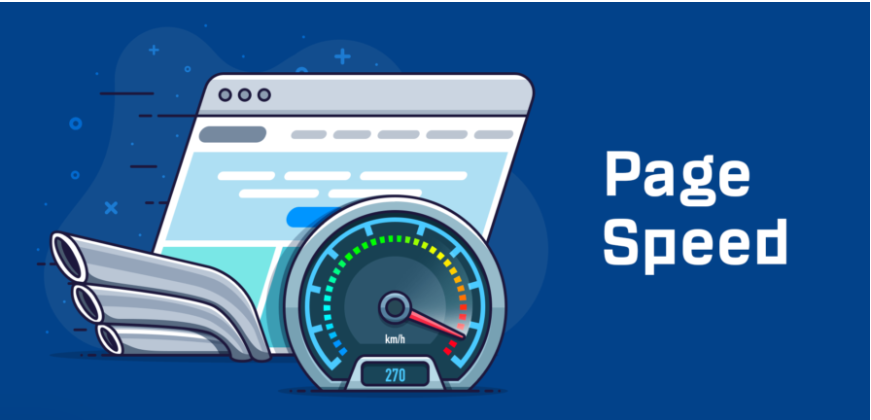Website speed plays a crucial role in user experience and can have a significant impact on a website’s success. By implementing strategies to improve site performance such as optimizing images, reducing HTTP requests, and utilizing CDNs, website owners can create a faster, more enjoyable experience for their users.
In today’s digital age, having a website that loads quickly is more important than ever. A slow website can result in frustrated users, decreased engagement, and ultimately, a loss of revenue. A study by Google found that users are 90% more likely to leave a website if it takes more than 5 seconds to load. This emphasizes the importance of website speed in user experience. In this blog post, we will discuss the role of website speed in user experience and provide strategies for improving site performance.

The Importance of Website Speed
-
User Expectations
In today’s fast-paced world, users expect websites to load quickly. According to a survey by Akamai, 47% of users expect a page to load in two seconds or less, and 40% of users will abandon a website if it takes more than three seconds to load. Thus, speed plays a crucial role in user experience and can greatly impact user engagement.
-
Search Engine Optimization (SEO)
Website speed is also an important factor in search engine optimization (SEO). Google uses it as a ranking factor, which means that websites that load quickly are more likely to rank higher in search results. This can result in increased organic traffic and better visibility for your website.
-
Conversion Rates
Website speed can also impact conversion rates. A study by Akamai found that a one-second delay in website load time can result in a 7% reduction in conversion rates. This means that even a small improvement in website speed can have a significant impact on your bottom line.
-
Mobile Responsiveness
With the rise of mobile devices, website speed has become even more important. Users expect websites to load quickly on their mobile devices, and a slow-loading website can result in a poor user experience. This can lead to decreased engagement and lower conversion rates.
Strategies for Improving Website Speed
-
Minimize HTTP Requests
One of the most effective ways to improve speed is to minimize the number of HTTP requests. This can be done by reducing the number of elements on a page, combining multiple style sheets and scripts, and using CSS instead of images whenever possible.
-
Optimize Images
Images are often the largest files on a webpage, so optimizing them can greatly improve speed. This can be done by reducing the file size of images, using the appropriate file type, and using compression tools.
-
Enable Browser Caching
Browser caching can also help improve speed. By enabling browser caching, you can store static files such as images, scripts, and style sheets on a user’s device, which can reduce the amount of time it takes to load a page.
-
Utilize Content Delivery Networks (CDNs)
Content Delivery Networks (CDNs) can also help improve speed by distributing content across multiple servers located in different geographic locations. This can reduce the distance that data has to travel to reach a user, which can result in faster load times.
-
Minimize HTTP Requests
Reducing the number of HTTP requests made by a website can also improve its speed. This can be achieved by combining multiple style sheets and scripts into a single file, reducing the number of images used on a page, and utilizing CSS sprites to combine multiple images into a single file.
Tools for Measuring Website Speed
-
Google PageSpeed Insights
Google PageSpeed Insights is a free tool offered by Google that analyzes the performance of web pages on both desktop and mobile devices. It provides a comprehensive report on the performance of a website, including suggestions on how to improve speed and user experience.
-
GTmetrix
GTmetrix is another free tool that provides insights into the performance of a website. It provides a detailed report on the page speed, page size, and requests made by a website, along with suggestions on how to optimize the website for better performance.
-
Pingdom
Pingdom is a website monitoring tool that provides performance insights and alerts for website downtime. It also provides a comprehensive report on website performance, including load time, page size, and requests made.
-
WebPageTest
WebPageTest is a free tool that provides a detailed analysis of speed and performance. It provides a waterfall view of the website, showing the load time for each resource and request made by the website.
Best Practices for Website Speed
-
Use a Reliable Web Hosting Provider
Choosing a reliable web hosting provider is crucial for speed and performance. A good web hosting provider should offer fast server response times, a 99.9% uptime guarantee, and scalable infrastructure to handle high traffic.
-
Choose a Lightweight Theme or Template
The theme or template used for a website can have a significant impact on its speed and performance. Choosing a lightweight theme or template that is optimized for speed can help improve website performance.
-
Avoid Excessive Ads and Pop-ups
Excessive ads and pop-ups can significantly slow down a website’s loading time. It’s essential to avoid using too many ads or pop-ups on a website to ensure that the website loads quickly.
-
Regularly Update Website and Plugins
Regularly updating the website and its plugins are crucial for speed and performance. Updates often include bug fixes and performance improvements that can help optimize speed.
Future Trends in Website Speed Optimization
-
Progressive Web Apps (PWA)
Progressive Web Apps (PWA) are web applications that use modern web capabilities to provide an app-like experience to users. PWAs are designed to be fast, reliable, and engaging, providing users with a seamless experience on any device.
-
Accelerated Mobile Pages (AMP)
Accelerated Mobile Pages (AMP) is an open-source project designed to improve speed and performance on mobile devices. AMP uses a stripped-down HTML format to optimize speed, providing a faster and more reliable experience to users.
-
HTTP/3
HTTP/3 is the next major revision of the HTTP protocol, designed to improve speed and performance. HTTP/3 uses the QUIC protocol, which is optimized for low-latency connections and provides faster data transfer speeds.
Conclusion
Website speed plays a crucial role in user experience and can have a significant impact on a website’s success. By implementing strategies to improve site performance such as optimizing images, reducing HTTP requests, and utilizing CDNs, website owners can create a faster, more enjoyable experience for their users. Additionally, monitoring site speed and making adjustments as needed can help ensure that a website is performing optimally and providing a positive user experience. By prioritizing website speed, website owners can improve user satisfaction, increase engagement, and ultimately drive more conversions and revenue.
Slow-loading websites can negatively impact user experience and ultimately lead to lost revenue. At Tanbits, we specialize in optimizing website speed through various techniques such as image optimization, reduced HTTP requests, and CDNs. Let us help you create a faster and more enjoyable experience for your users, leading to increased engagement and conversions.











